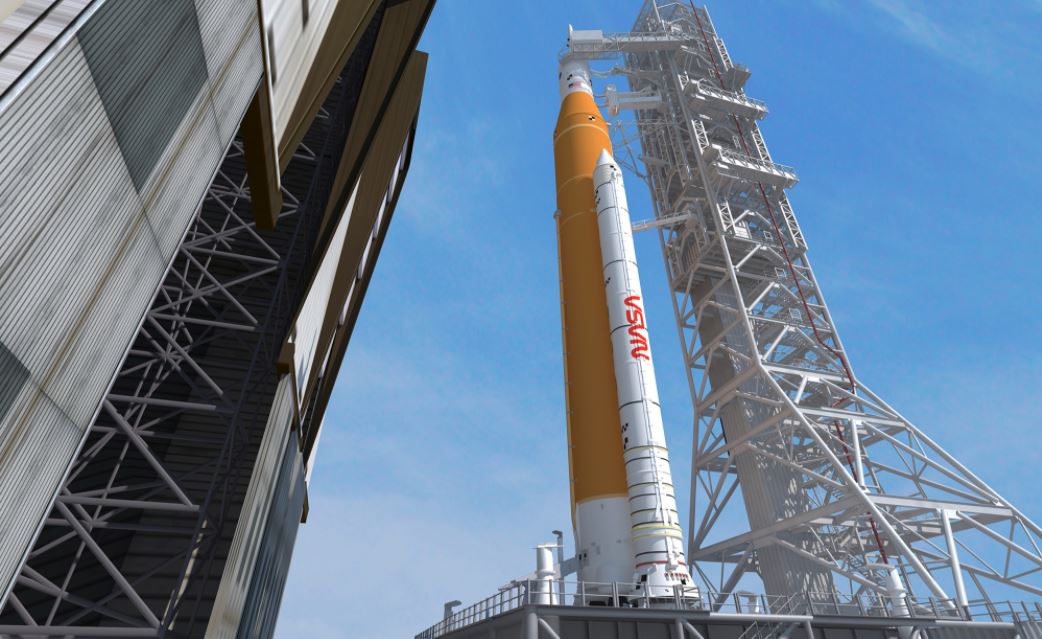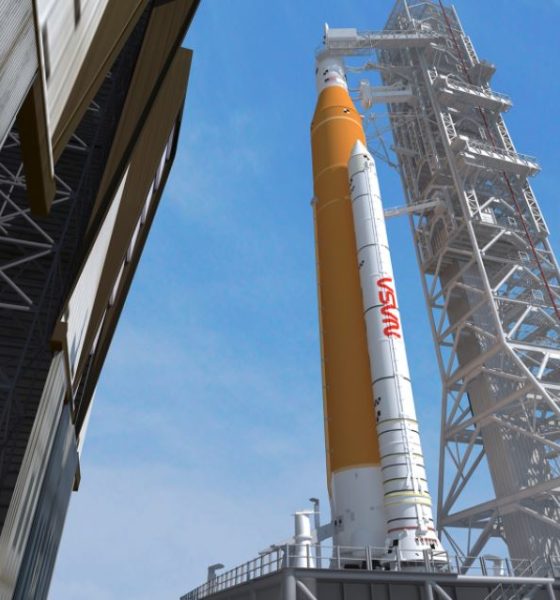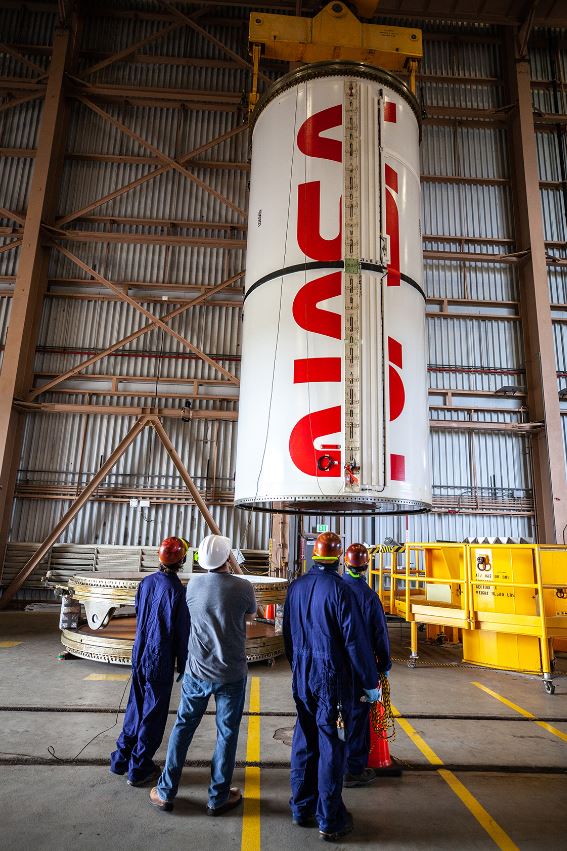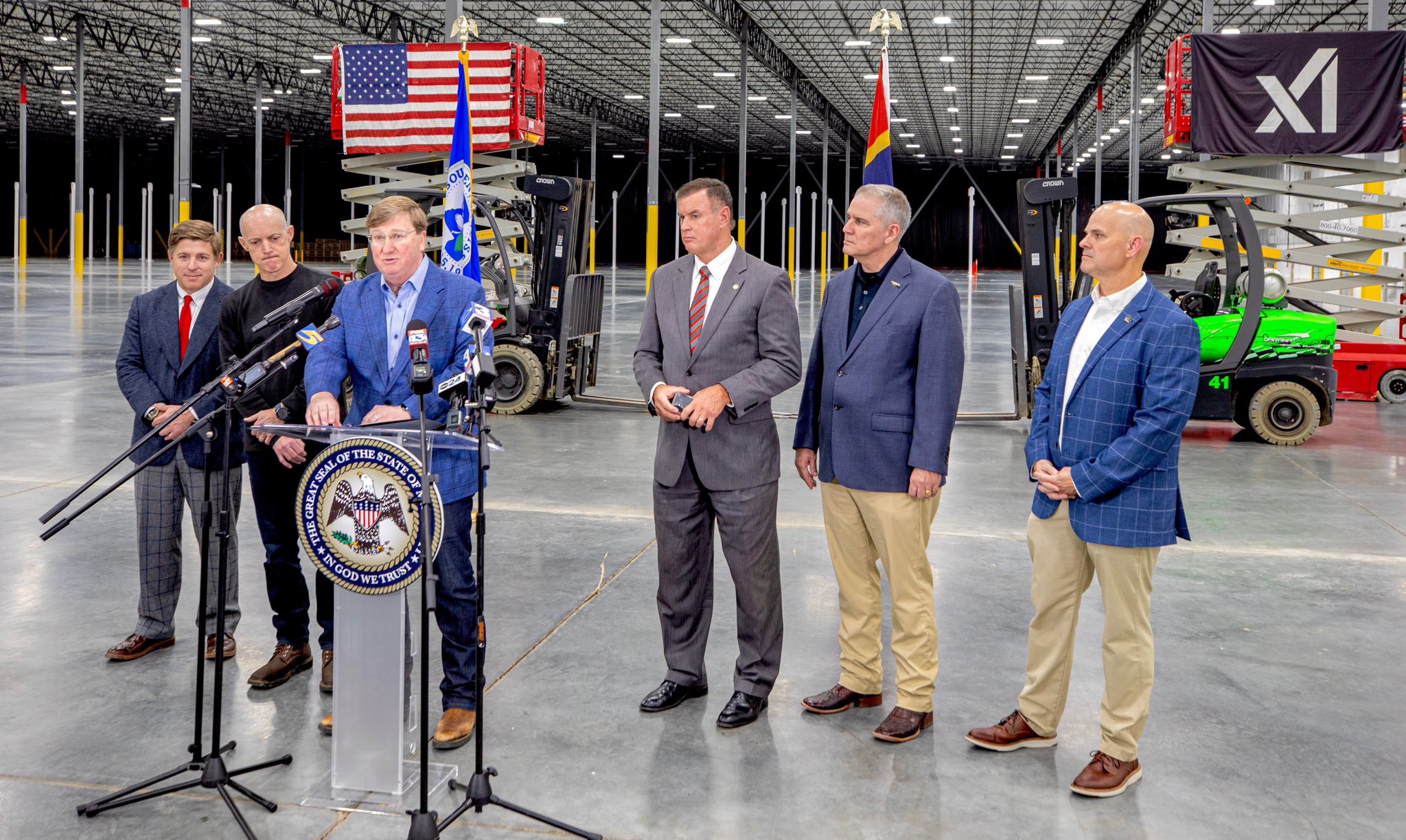

News
NASA adorns Artemis Moon rocket with vintage worm logo after SpaceX flight debut
NASA’s famous worm logo will accompany astronauts on their way to the Moon under the agency’s Artemis program. The vintage design, introduced in 1975 but retired in 1992, was first returned for SpaceX’s Demo-2 astronaut mission to the International Space Station (ISS) this year, and now the logo will grace another historic return for the US spaceflight program. Photos of two Artemis Space Launch System (SLS) booster sections donning the worm logo were posted on NASA’s Moon mission website this week.
“After almost three decades, our famous logotype is back in action, and it is thrilling for all of us that worked on the original design to have it return in such an impressive way,” Richard Danne, one of the logo’s original designers, commented in NASA’s recent article on the worm’s return. “It is particularly exciting to be involved with the Artemis program, so full of potential beginning with this promising first mission.”

The NASA worm logo was also recently applied to the Orion capsule alongside the logo for the European Space Agency (ESA), an agency partner for Artemis. The laser-cut decals were applied to the underside of Orion’s crew module adaptor which will connect to a service module that provides fuel and propulsion. Both logos will be visible as the capsule heads towards the Moon thanks to cameras on the spacecraft’s solar arrays.
The agency’s other blue-colored logo, called the meatball, was created in the 1950s and was seen as a patriotic symbol during the Cold War against the Soviet Union. It featured the same colors as the American flag, namely a red chevron wing on a blue sphere with white lettering. The NASA worm logo first debuted in 1975 was a sleeker alternative that accompanied the transition from the moon programs to the space shuttle era. Its simplistic design earned it a presidential award from Ronald Reagan in 1984.

SpaceX brought the famous worm logo out of retirement for its historic Demo-2 mission which took NASA astronauts to the ISS in late May this year. As the first private spacecraft to successfully launch and land astronauts, the debut seemed an appropriate marker for yet another transition to a new era of spaceflight now focused on public-private partnerships, lunar return, and deep spaceflight missions to Mars. SpaceX has since landed several Moon-centered contracts from NASA, continuing its significant contributions in moving humans towards a more spacefaring future.
A timelapse video of NASA’s worm logo being applied to two Artemis booster segments can be watched below:

News
Tesla Model 3 becomes Netherlands’ best-selling used EV in 2025
More than one in ten second-hand electric cars sold in the country last year was a Tesla Model 3.

The Tesla Model 3 became the most popular used electric car in the Netherlands in 2025, cementing its dominance well beyond the country’s new-car market.
After years at the top of Dutch EV sales charts, the Model 3 now leads the country’s second-hand EV market by a wide margin, as record used-car purchases pushed electric vehicles further into the mainstream.
Model 3 takes a commanding lead
The Netherlands recorded more than 2.1 million used car sales last year, the highest level on record. Of those, roughly 4.8%, or about 102,000 vehicles, were electric. Within that growing segment, the Tesla Model 3 stood far ahead of its competitors.
In 2025 alone, 11,338 used Model 3s changed hands, giving the car an 11.1% share of the country’s entire used EV market. That means more than one in ten second-hand electric cars sold in the country last year was a Tesla Model 3, Auto Week Netherlands reported. The scale of its lead is striking: the gap between the Model 3 and the second-place finisher, the Volkswagen ID3, is more than 6,700 vehicles.
Rivals trail as residual values shape rankings
The Volkswagen ID.3 ranked a distant second, with 4,595 used units sold and a 4.5% market share. Close behind was the Audi e-tron, which placed third with 4,236 registrations. As noted by Auto Week Netherlands, relatively low residual values likely boosted the e-tron’s appeal in the used market, despite its higher original price.
Other strong performers included the Kia Niro, the Tesla Model Y, and the Hyundai Kona, highlighting continued demand for compact and midsize electric vehicles with proven range and reliability. No other model, however, came close to matching the Model 3’s scale or market presence.
News
Tesla Model Y Standard Long Range RWD launches in Europe
The update was announced by Tesla Europe & Middle East in a post on its official social media account on X.

Tesla has expanded the Model Y lineup in Europe with the introduction of the Standard Long Range RWD variant, which offers an impressive 657 km of WLTP range.
The update was announced by Tesla Europe & Middle East in a post on its official social media account on X.
Model Y Standard Long Range RWD Details
Tesla Europe & Middle East highlighted some of the Model Y Standard Long Range RWD’s most notable specs, from its 657 km of WLTP range to its 2,118 liters of cargo volume. More importantly, Tesla also noted that the newly released variant only consumes 12.7 kWh per 100 km, making it the most efficient Model Y to date.
The Model Y Standard provides a lower entry point for consumers who wish to enter the Tesla ecosystem at the lowest possible price. While the Model 3 Standard is still more affordable, some consumers might prefer the Model Y Standard due to its larger size and crossover form factor. The fact that the Model Y Standard is equipped with Tesla’s AI4 computer also makes it ready for FSD’s eventual rollout to the region.
Top Gear’s Model Y Standard review
Top Gear‘s recent review of the Tesla Model Y Standard highlighted some of the vehicle’s most notable features, such as its impressive real-world range, stellar infotainment system, and spacious interior. As per the publication, the Model Y Standard still retains a lot of what makes Tesla’s vehicles well-rounded, even if it’s been equipped with a simplified interior.
Top Gear compared the Model Y Standard to its rivals in the same segment. “The introduction of the Standard trim brings the Model Y in line with the entry price of most of its closest competition. In fact, it’s actually cheaper than a Peugeot e-3008 and costs £5k less than an entry-level Audi Q4 e-tron. It also makes the Ford Mustang Mach-E look a little short with its higher entry price and worse range,” the publication wrote.
Elon Musk
Elon Musk’s xAI bets $20B on Mississippi with 2GW AI data center project
The project is expected to create hundreds of permanent jobs, dramatically expand xAI’s computing capacity, and further cement the Mid-South as a growing hub for AI infrastructure.

Elon Musk’s xAI plans to pour more than $20 billion into a massive new data center campus in Southaven, Mississippi, marking the largest single economic development project in the state’s history.
The project is expected to create hundreds of permanent jobs, dramatically expand xAI’s computing capacity, and further cement the Mid-South as a growing hub for AI infrastructure.
xAI goes MACROHARDRR in Mississippi
xAI has acquired and is retrofitting an existing facility in Southaven to serve as a new data center, which will be known as “MACROHARDRR.” The site sits near a recently acquired power plant and close to one of xAI’s existing data centers in Tennessee, creating a regional cluster designed to support large-scale AI training and inference.
Once completed, the Southaven facility is expected to push the company’s total computing capacity to nearly 2 GW, placing it among the most powerful AI compute installations globally. The data center is scheduled to begin operations in February 2026.
Gov. Tate Reeves shared his optimism about the project in a press release. “This record-shattering $20 billion investment is an amazing start to what is sure to be another incredible year for economic development in Mississippi. Today, Elon Musk is bringing xAI to DeSoto County, a project that will transform the region and bring amazing opportunities to its residents for generations. This is the largest economic development project in Mississippi’s history,” he said.
xAI’s broader AI ambitions
To secure the investment, the Mississippi Development Authority approved xAI for its Data Center Incentive program, which provides sales and use tax exemptions on eligible computing hardware and software. The City of Southaven and DeSoto County are also supporting the project through fee-in-lieu agreements aimed at accelerating development timelines and reducing upfront costs.
Founded in 2023 by Elon Musk, xAI develops advanced artificial intelligence systems focused on large-scale reasoning and generative applications. Its flagship product, Grok, is integrated with the social media platform X, alongside a growing suite of APIs for image generation, voice, and autonomous agents, including offerings tailored for government use.
Elon Musk highlighted xAi’s growth and momentum in a comment about the matter. “xAI is scaling at an immeasurable pace — we are building our third massive data center in the greater Memphis area. MACROHARDRR pushes our Colossus training compute to ~2GW – by far the most powerful AI system on Earth. This is insane execution speed by xAI and the state of Mississippi. We are grateful to Governor Reeves for his support of building xAI at warp speed,” Musk said.








